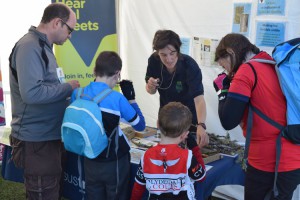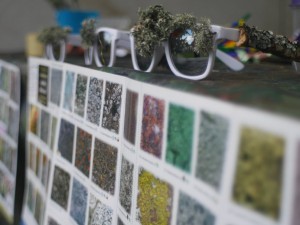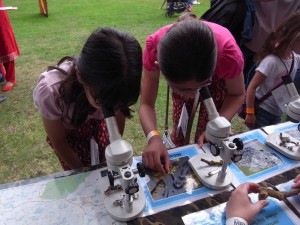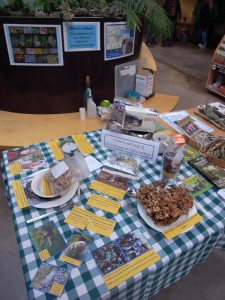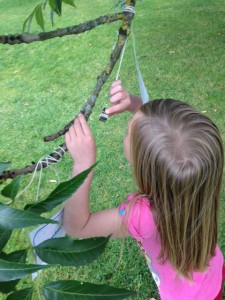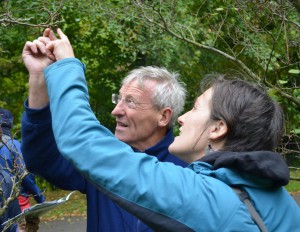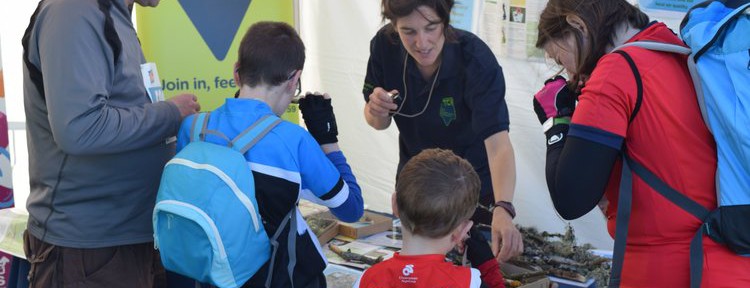
I span into September, and have been learning, facilitating, discovering and exploring at full tilt ever since! The last two months have been jam packed full with public engagement activities and enhancing my experience and knowledge of lichens in different habitats.
September saw me once again joining Sustrans Scotland on one of their stalls, but this time with around 10,000 plus cyclists at the Pedal for Scotland event held at the infamous Murrayfield Stadium in Edinburgh. I can’t imagine many of those cyclists setting out in the morning imagining they’d be taking a closer look at a lichen or two by the afternoon… but that’s what quite a few of them did!!
Thanks to the wonderful encouragement of super TCV OPAL Communities officer Amy Styles, lichens in full technicolour literally, took over the TCV stand at Edinburgh MELA this year. A range of lichen-related activities was on offer for children and families alike from making a bug or beastie that might camouflague itself in a lichen, to lichen moustaches to remind people that you can often find lichens ‘right under your nose’ if only you know where to look for them.. and an opportunity to get close up and personal with a variety of lichen indicators in our ‘wee lichen lab’! The festival was incredible and the response to exploring and learning about lichens as indicators of air pollution was a roaring success. Who says lichens are boring!!!! Not the lovely folk who came visiting us at the stall! All were wide-eyed and fascinated! Hooray!
This month I also teamed up with the fantastic OPAL (Open Air Laboratories) crew to deliver a ‘lichens as air quality indicators’ session – at a local high school in Edinburgh. A fantastic class of budding environmental biologists came out into their school grounds and discovered not only that they have an actual air quality monitoring station installed at the back of their school, but also played lichen speed-dating and learnt how to spot the nine different indicator lichens as set out in the OPAL Air Survey.
Lichens were also on the menu at this years Explorathon’15. At an event hosted in the John Hope Gateway at the Royal Botanic Garden Edinburgh (RBGE), lichens were literally the dish of the day – served up with a healthy dose of fresh air as visitors to the garden came to explore who and what eats and lives on lichens and how lichens show us the way to cleaner, healthier air.
The month ended with a Harvest Celebration in the Edible garden at RBGE, where a fantastic Natural Networks trainee Rebecca Cairns, who has explored lichens herself and supported TCV on the lichen stall at Edinburgh MELA, encouraged families to ‘take a closer look..’ at lichens growing on a beautiful old ash tree in the garden. Getting members of the public linking lichens, air pollution and active travel as a way to help clean up the air where we live.
Just peaking into October and we made a big impression with lichens at the TCV BIG GREEN WEEKEND. I helped facilitate an OPAL Air Survey session with Friends of the River Klein in the heart of Glasgow as part of a 4 week project where FORK have been exploring the biodiversity of their wonderful local patch along the River Klein, just near the Botanic Gardens of Glasgow. 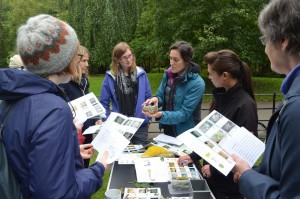
Air pollution can seem like a HUGE intangible environmental issue with wide reaching consequences which quite frankly can be rather depressing, and yet this month I have felt utterly inspired and uplifted. I have met so many people who care enormously about the state of the planet we share, yet who often, as I do, feel overwhelmed by the such global issues that they do not always feel they have something to offer to make a difference. The range of amazing people whom I continue to meet at events, in schools, at conferences, my peers, my mentors and others along the way throughout my traineeship – their enthusiasm, interest, excitement, wonder, passion, hard work, dedication and offers of differing perspectives have really buoyed me, and increased my own passion and dedication for connecting people with nature, with increased vigour for facilitating and enabling individual and community positive actions for the well-being of the planet and all that share it.
“I am only one. But still I am one. I cannot do everything, but still I can do something; and because I cannot do everything, I will not refuse to do something that I can do” Helen Keller

